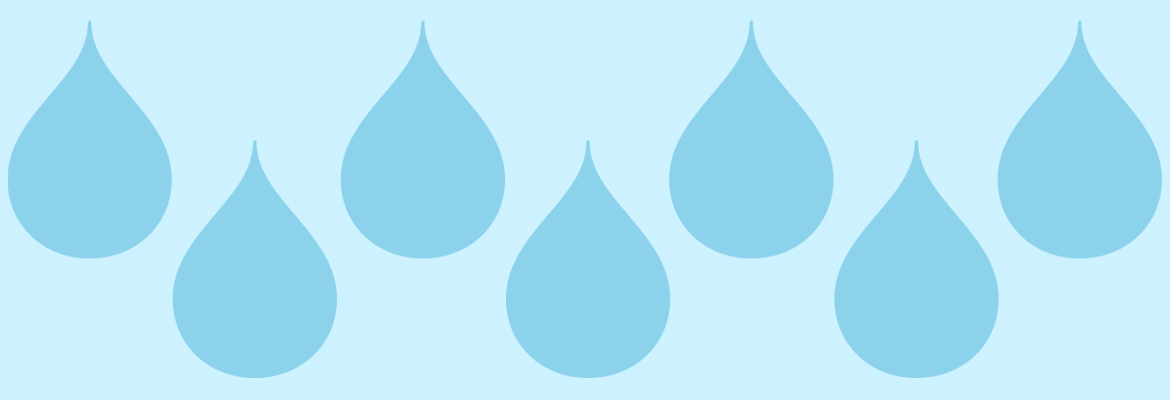“Water, water, everywhere, / And all the boards did shrink; / Water, water, everywhere, / Nor any drop to drink”. Samuel Taylor Coleridge wrote these lines at the end of the eighteenth century, but they ring dramatically true for many countries in the world also in present days. Despite the planet is literally covered by salt water, only a tiny proportion (nearly 1%) is freshwater accessible for human purposes. Water scarcity, occurring when the requirements of all sectors cannot be met fully due to constraints related to water quantity or quality, currently affects about 40% of the world population. Future projections are not reassuring, as they predict that, in 10 years, 1.8 billion people will be living in areas suffering from absolute water scarcity and about 60% will be living in water stressed regions. Unfortunately, the development of desalination facilities is not an option for many of these countries due to poorly diversified economies and adaptive societies.
Physical water scarcity is particularly pronounced in the Middle East, North Africa and South Asia, but the lack of adequate infrastructures, institutions and socio-economic diversification (economic water scarcity) also prevents water resources to be used by a number of African countries, which have attracted, by virtue of this unexploited potential, the largest share of investments in agricultural land (and therefore water resources) by foreign investors, that are often referred to as land grabs.
The challenge reaches even bigger proportions if we consider that the populations are growing and that, as economies develop, dietary preferences shift towards an increased demand for animal-based products. As demand increases, supplies shrink. Climate change is already modifying precipitation patterns, evapotranspiration and temperatures, as well the frequency and severity of extreme events. These new conditions will pose huge challenges especially for societies lacking social, technological and financial adaptation measures.
How to tackle water resource scarcity problems? Addressing the challenges associated with agricultural water use is essential, as the production of crops is the biggest water used worldwide and fundamentally competes with other uses not only by households and industry, but also aquatic and terrestrial ecosystems, which is fundamental to keep healthy as they provide ecosystem services. Over the past century, water use has increased more than twice the rate of population growth. About 70% of the water withdrawn by aquifers and surface bodies is deployed in the agricultural sector, which entails the most critical impacts of all anthropogenic activities. This proportion goes up to 90% in some economies in the developing world.
The food supply chain also accounts for about one third of global energy consumption. Projections of future agricultural water use predict an increase of about 20% of water use by 2050, also in countries suffering already from water deficit, even in the presence of productivity improvements through technological development. Agricultural water use is also intertwined with land degradation. Agricultural production covers about 11% of the land surface, 52% of which moderately or severely degraded. Annually, about 12 million hectares of land become unproductive due to droughts and desertification. However, only a few countries in the world have a national policy on droughts. In 15 years, an additional 47 million hectares of land will be needed for food and animal feed production, 42-48 million hectares for large-scale afforestation, and 18-44 million hectares for producing biofuel feedstock by the year 2030. Better land and water management are necessary to provide food security to next generations by increasing productivity not only of existing irrigated land but also rainfed areas, where the greatest potential lies.
The growth of the world’s population from 6.5 billion in 2005 to 9.6 billion by the year 2050 and almost 11 billion in 2100, coupled with changing lifestyles and urbanisation, is expected to call for 50% more food in 2030 and 70% in 2050. In developing countries, the increase will reach up to 100% by 2050. Food consumption is water consumption due to the close connection between food production (through photosynthesis in plants) and water consumption (through crop transpiration). About 90% of the water consumed by societies is food-water. Changing dietary preferences thus also play a role. According to the World Health Organisation, global average annual meat consumption will reach up to 45 kg per capita in 2030. As the demand for high-value animal protein increases, more cereal grains are diverted from human consumption to animal feed.
At present, more than one-third of global cereal production is used either for animal feed or other uses, including biofuels. About 26% of the world’s land area is used for grazing livestock and 21% of arable land is used for producing cereals for feeding animals. Livestock products are highly water intensive due to the large volumes of water “embedded” in animal feed, which range from 4,000 litres for a kilo of chicken meat to over 15,000 litres for a kilo of beef even if the impacts on water bodies is shaped by the context of water withdrawal (water rich or poor area) and the source of water used (soil water or freshwater from aquifers and surface bodies) as well as whether livestock production has occurred in an intensive way or not. The factors shaping the water footprint1 of animal products range from feed composition, the production site, as well as the origin of the feed ingredients.
Meeting the growing demands for energy is also a challenge for the years to come. In 2010 energy production was 15% of total withdrawals, of which 11% was consumed. By 2035, global energy demand will grow by one-third with respect to 2011, especially in the world’s emerging economies (China and India, but also countries in the Middle East and South East Asia). Energy water demand will increase, as a result, up to 20% of total withdrawals and the use of higher efficiency power plants with more sophisticated cooling systems will drive an increase in the share that is consumed (85%).
In the transportation sector, the demand is shifting away from conventional fuels to unconventional water-intensive fossil fuels, which include fracking, oil sands, biofuels and electricity. Despite the EU is revising its energy policy, biofuels will continue to account for a substantial component of its fuel energy mix. The demand for energy feedstocks has been by far the largest source of new demand for agricultural products in decades. It currently occupies some 2-3% of the world’s arable land. Moreover, the production of feedstock for biofuels destined to the transport sector competes with food production not only on significant tracts of prime cultivated land, but also because growing biomass requires large volumes of water. Biofuels are in fact among the most water intensive types of fuel production, due to water usage in the cultivation phase. It has been shown that freshwater scarcity will be exacerbated in the next 15 years as the water footprint of biofuels is expected to grow by more than ten times compared to 2005.
The increase in biofuel consumption in European countries will be high both for bio-ethanol and bio-diesel, with France, Italy, Germany and the UK among the top consumers in the world.
Achieving the triple goal of ensuring societal needs, contributing to development and preserving ecosystems requires new policy thinking and, more importantly, political will to go through a politically contentious process of reforms. This process include considering rain as the ultimate source of agricultural water that can be managed and relieving the pressure on blue water sources, which have the highest opportunity cost as they can also be used for other purposes yielding more value per drop.
Efficiency of rainfed agriculture can be increased through management of soil moisture and soil fertility, and providing supplemental irrigation when needed. It has been estimated that 75% of the global requirement for increased food productivity could be met by improving the productivity of low-yielding agriculture in developing regions to a level of 80% of the productivity of high-yielding agriculture. Boosting data is also a fundamental step to put water resource management as a priority issue on the agenda of policy makers. Developing an integrated approach that takes into account the multiple interactions between different domains and cross-sectoral implications of water use is key for societies to move forward in a sustainable way.

Bibliography
- Allan J.A. (2013), “Food-water security: beyond water and the water sector”, in Lankford B., Bakker K., Zeitoun M., and Conway D. (eds), Water security: principles, perspectives, practices, Earthscan, London
- UN-Water, Fao, 2007, Coping with water scarcity. Challenge of the twenty-first century
- Erd (Report on Development 2011/2012) (2012), Confronting scarcity: managing water, energy and land for inclusive and sustainable growth. Available online at: erd-report.com/erd-reports/erd3-2011-2012/
- Gerbens-Leenes P.W., van Lienden A.R., Hoekstra A.Y., van der Meer T.H. (2012), “Biofuel scenarios in a water perspective: The global blue and green water footprint of road transport in 2030”, Global Environmental Change, v. 22, pag. 764-775
- Hoekstra A.Y. (2013), “The Water Footprint: The Relation Between Human Consumption and Water Use”, in M. Antonelli e F. Greco, L’acqua che mangiamo, Edizioni Ambiente
- Iea (International Energy Agency) (2013), World Energy Outlook 2013. Executive Summary, Oecd/Iea. Available online at: www.iea.org
- Molden D. (2007), Water for Food, Water for Life: A comprehensive Assessment of Water Management in Agriculture, Earthscan, London
- United Nations Department of Economic and Social Affairs [Undesa] (2013), World Population Prospects: The 2012 Revision, Highlights and Advance Tables, United Nations, New York
- UN Water (2014), The United Nations World Water Development Report 2014. Water and energy, v. 1
- Who (World Health Organisation) (2013), “Global and regional food consumption patterns and trends”, Nutrition Health Topics. Available online at: www.who.int/entity/nutrition/topics/en/



